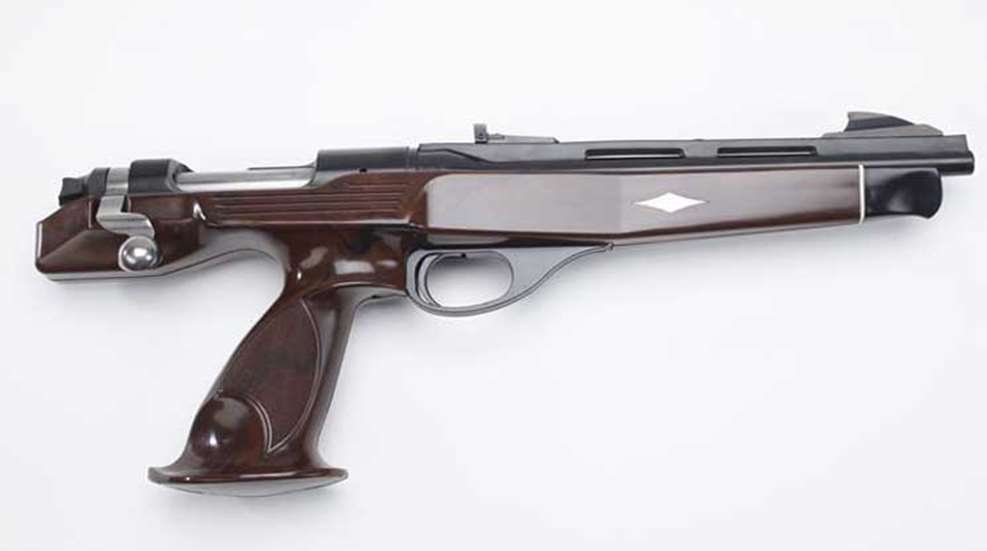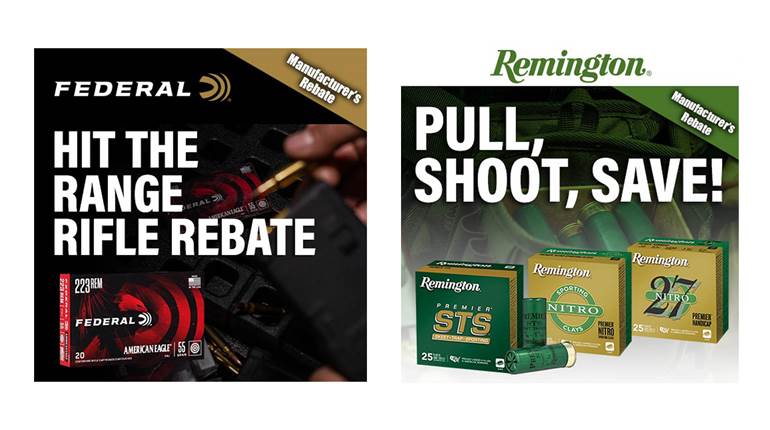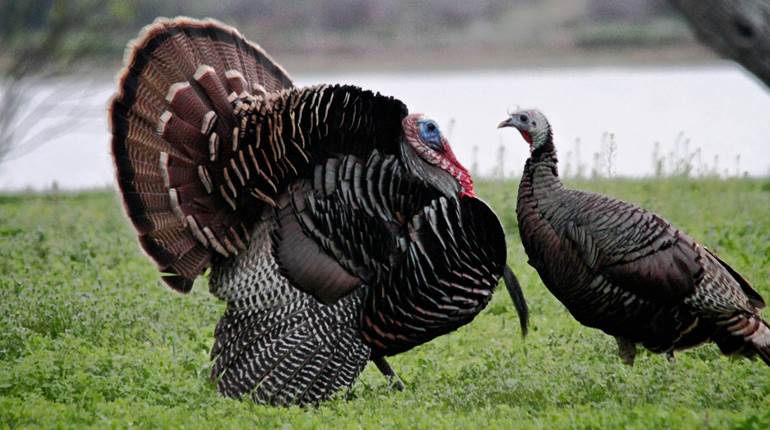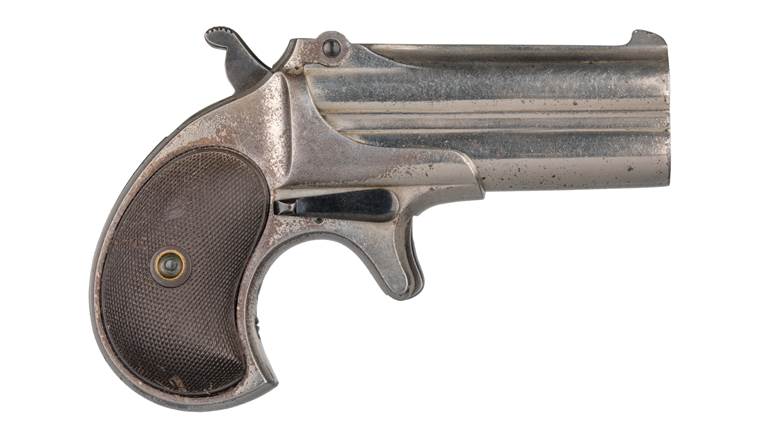
If we only had recording equipment, think of how much more history could have been saved. Just prior to the turn of the 20th century, America’s oldest gun maker—Remington—made a corporate decision to concentrate on sporting firearms. That certainly would have been an interesting meeting to witness. The Model 1890 revolver—while sturdy and accurate—just could not keep up with the Colts and Smith & Wesson revolvers on the frontier. Just a little more than 2,000 had been made during its four-year run. The cost, by the way, was $10.70 a copy, about half that of a Colt. Remington chose to shun the handgun market and devote its resources toward sporting long guns.
The company enjoyed a fair amount of success as the country transformed from an agricultural based economy to an industrial one. Despite the evolution toward motorized transport and mechanization, many agricultural principles remained part of the American ethos, including hunting. Fast forward to just after World War II when Wayne Leek, one of Remington’s most prolific designers and engineers, proposed making a single-shot, bolt-action pistol. However, the powers-that-be at Remington shelved his plan in lieu of getting the more traditional rifle and shotgun markets back on their peacetime feet.
By the early 1960s Remington had pretty well reestablished itself in the sporting rifle and shotgun market. Keeping with the sporting firearms’ focus, the company revisited Leek’s concept of a high-powered, bolt-action sporting pistol. A bolt-action pistol is a clumsy gun—heavy, rather unwieldy and difficult to operate quickly. Remington answered many of these criticisms by utilizing its short-action 40X receiver, a target-grade action manufactured with very tight tolerances developed in 1955.
In order to get better balance, Remington moved the fire-control system amidship. Barrel length was set at 10 1/2". Prototypes were initially chambered in the .222 Rem., the darling of benchrest shooters of that time, but the muzzle blast from the abbreviated barrel was daunting, as was the flash from burning powder exiting the barrel. Remington’s engineers determined that the 1.700" case length of the .222 cartridge provided too much capacity and thus extraneous powder burned outside the gun. In other words, a 10 1/2" barrel cannot burn all of the powder in a .222 Rem. case. Experiments were conducted shortening the case resulting in a new case length of 1.300". This length allowed for better efficiency while retaining an acceptable velocity. They named the new cartridge the .221 Remington Fireball, acknowledging with some irony the fireball that exited the barrel.
When Remington was purchased by DuPont during The Depression, the company adopted a somewhat futuristic styling attitude. DuPont, which started as a gunpowder manufacturer, later developed into a chemical company that helped introduce plastics and synthetic substances into the manufacturing process. A futuristic-looking pistol required an equally innovative stock, so Remington turned to its godfather for a stock material. A hard and abrasion-resistant thermoplastic polyamide from the nylon family, Zytel, was the chosen stock material. This material, dyed dark brown, was used in the 1959 model Nylon 22 rifle. Remington continued with similar styling for the new pistol, even incorporating a couple of white diamonds in the ambidextrous stock and completed with a black fore-end tip with a white-line spacer. A not-too-practical nylon vented rib was attached to the barrel in keeping with the “space age” styling, along with a so-called “shark fin” front sight. Though not really space age, the dog-leg bolt with its flat-globe-like knob certainly was a different look for the time. Unfortunately, Remington did not see fit to reverse the side of operation of the bolt.
The pistol was introduced to the shooting public in 1963 as the Remington XP-100 Long Range Pistol—the XP-100 standing for “experimental pistol number 100.” It came with its own special carrying case, adjustable iron sights and drilled and tapped for optical sights. With an initial MSRP of $99, the XP-100 was clearly not a conventional sporting arm. It targeted the hunter with a bent toward the unusual. Handgun hunting was finally blossoming, and varmint or pest shooting provided an ample environment for testing and experimenting. Almost immediately handgunners began wildcatting cartridges for the pistol and stock makers started making stocks from exotic woods in even more glamorous styles.
Remington offered the XP-100 in its original configuration until 1985. In 1975 the first Handgun Metallic Silhouette Match was conducted, and many competitors beat a path toward gunsmiths for more powerful chamberings and configurations of the XP-100. This spurred Remington into developing the XP-100 Silhouette Target Pistol in 1980. It retained the Zytel stock but featured a 14 1/2" barrel chambered in a new 7 mm Benchrest (BR) cartridge, a round based upon the .308 Win. shortened, modified and necked to 7 mm. In 1987 the .35 Rem. chambering was added.
The late Bob Milek was a devoté of handgun hunting, especially varminting. In 1985 he asked Dick Dietz, Remington’s public relations guy at the time to chamber the XP-100 in .223 Rem. Milek’s success with the setup got Remington to include it in its lineup the next year, christening it as the XP-100 Varmint Special.
Remington’s Custom Shop began offering custom versions of the XP-100 complete with high-grade walnut stocks and target sights and barrel lengths out to 15 1/2". Stocks were made either right or left handed. Heavy-barreled versions chambered in .22-250 Rem. and .308 Win. came along in 1992. In 1990 the Custom Shop offered an XP-100R, a repeater with a blind-box magazine and chambered in .223 Rem., .22-250 Rem., .250 Savage, 7 mm-08 Rem., .308 Win., .35 Rem. and .350 Rem. Mag. A rimfire version, the XP-100R Rimfire Pistol was offered in 1991. It fed from a five-shot detachable magazine and featured a Kevlar stock. Very few of these were made.
In 1993 Remington offered an XP-100 Hunter Pistol, featuring a 14 1/2" barrel and chambered in .223 Rem., 7 mm BR, 7 mm-08 Rem. and .35 Rem. It lasted a couple of years. Remington temporarily discontinued the XP-100 in 1995 and reintroduced it in 1998 as a repeater from the Custom Shop, but by this time competition from other gun makers like Savage with its Striker bolt action and the Thompson/Center Contender and Encore series of single-shot hunting pistols made this a one-year run.
The XP-100 has had a pretty good run. Like a lot of innovative designs, all kinds and sorts of gunsmiths and wannabes have had a go at improving or in many cases butchering the original guns. An unmodified original XP-100 is a rare find, and if in unblemished condition can command about a grand. Later versions, as well as those worked over by aftermarket folks can run the gamut from $300 on up. It is certainly not an everyman’s gun. Traditionalists and elitists come down with the vapors over plastic stocks and vent ribs, but for the experimenter and guy who wants to reach out as far as possible with a handgun the XP-100 is tough to beat.





































